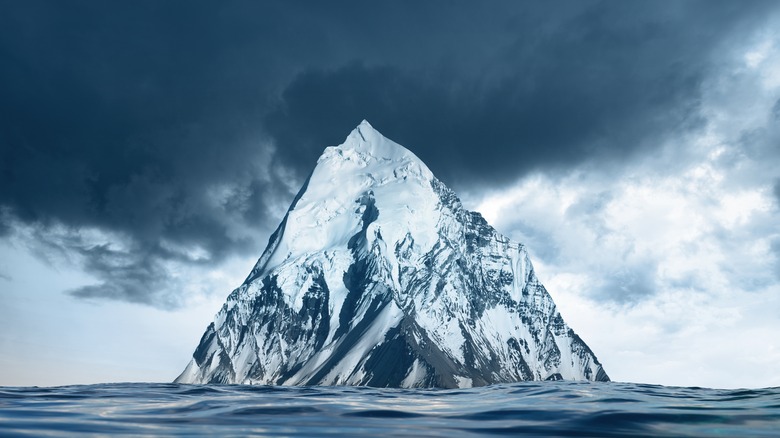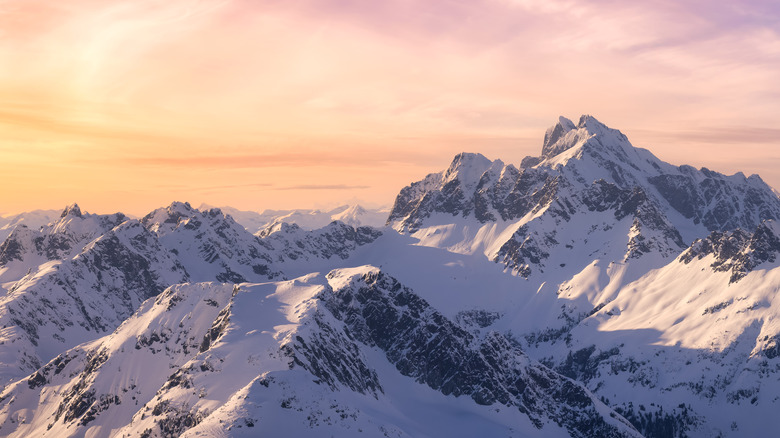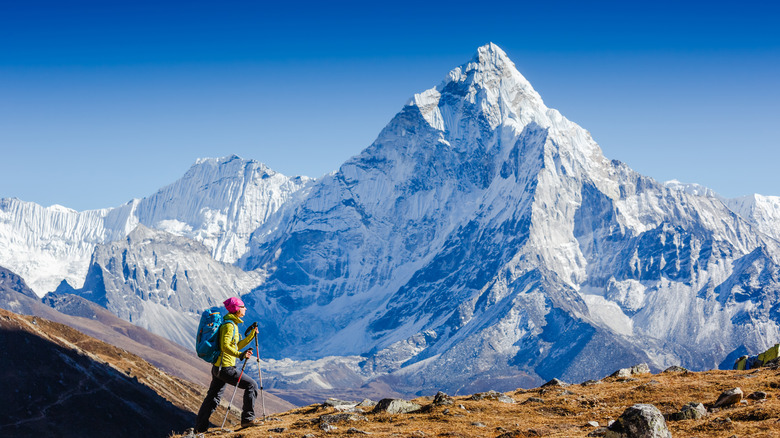The World's Longest Mountain Range Is Actually Under Water
Scientists can claim to know an awful lot about the world's mountains. After all, they tend to be huge, so they're rather difficult to miss, and don't tend to be in much of a hurry to go anywhere. Given these traits, they're quite easy subjects for study. Not to mention the fact that outrageous numbers of mountaineers just can't resist scaling them (or trying to at the very least).
Thanks to the efforts of these intrepid minds, our collective knowledge of planet Earth's mountains is quite extensive. Many of us know, for instance, that the tallest peak on the planet is Mount Everest, which stands at a dizzying 8,849 meters (29,032 feet) tall, per Britannica. The Himalayas, the mountain range Everest calls home, is not the planet's longest, however.
World Atlas claims that the Andes of South America, all 4,350 miles (7,000 km) of it, is the longest mountain chain on this wonderful planet of ours. Remarkably, though, there's a mountain range beneath the ocean that far outstrips it.
The immense size of the mid-ocean ridge
In "Seafloor Geomorphology as Benthic Habitat" (via Science Direct), Peter T. Harris writes of the immense formation that is the mid-ocean ridge. Per Harris, these are formed by "the upwelling of basaltic lava and lateral rifting of ocean crust," seismic activity on an immense scale that shapes the undersea environment around itself.
The result of this is a network of rift valleys all around the planet, as well as a terrifying amount of volcanoes. According to Harris, "[three quarters] of all volcanic activity on the planet" occurs at the mid-ocean ridges. They are raw, formidable demonstrations of nature on an incredible scale, as are any mountain ranges. This one is the largest of all, however.
The National Ocean Service states that the volcanoes and volcanic sections of the mid-ocean rift number in their thousands, and that eruptions happen at various points across it. Almost like finding faulty bulbs in a long string of twinkly lights, except this string stretches for 40,389 miles (65,000 km) and is the longest mountain range on Earth.
We know so little about its depths
The mid-ocean ridge network is almost entirely underwater, National Ocean Service goes on, with only 10% of it not being submerged. It leaves the seafloor ever-changing and shifting, as seismic activity and the resulting flow of magma changes the geography of that undersea world.
NOAA Ocean Exploration, in fact, goes on to reveal just how enigmatic this vast realm really is. It reports that not even 1% has been explored beyond mapping. Perhaps this isn't surprising, considering the average depth of these formations is 2,500 meters (8,200 feet). That would be quite a venture, and coupled with the volatile environment, it explains why precious few ventures (via unmanned deep sea exploration machines) have been embarked on. There's so much ground to cover, and volatile ground at that.
The mountains of the mid-ocean ridge may not be tall as Everest (pictured above) or as iconic as Kilimanjaro, but the sheer majesty and scope of this largely underwater range is truly awe-inspiring.


